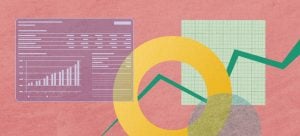For hundreds of years, people have relied on visual representations to understand information easily and quickly. In a popular TEDTalk, data journalist David McCandless talks to the engaged crowd about how data visualization can solve information problems usually caused by an overload or scattering of data.
We’re all suffering from information overload or data glut. – David McCandless
There is an increasing demand for transparency in investment management, mainly due to technology and a new generation of investors. So it’s more important than ever to present fund data in a simple and easy-to-understand way. How are you making your fund information memorable and straightforward? Pulling from David’s smart and at moments comical talk, here are some interesting points to consider on why it’s critical to create beautiful data visualizations.
- We all have something in common – we’re visual learners
- Information, often times complex, bombards people everyday
- Coming across a beautiful graphic or well-designed chart is a relief for the eyes and the brain
- Good information design will solve data issues and tell a story
- Visualizing information helps focus on what’s only important
Watch David’s TEDTalk here:
Methods of displaying data
It’s established that data visualization is important, but what are the different ways to show data? Here are three ways to tell your data’s story, beautifully:
1. Infographics
When the data is too complex to read in a written format, instead create an infographic. Infographics tell a story by combining pictures, words, charts, stats and percentages in one effective graphic. If you’ve been following the Kurtosys blog, you’ve probably noticed we rely heavily on infographics to sum up key findings in new asset management reports and or even as a means to provide “how to” tips.
Barclays UK has an “infographics hub” on their website. They have created a range of infographics to educate investors on how to buy a car to reducing your home insurance premium. A rule of thumb is to first make sure your audience is receptive to infographics — they’re not for every company. Financial services is ripe for this type of visual information. After all, financial data and policies can be quite complex and dry.
2. Charts and tables
If you need to show numerical data, this might be the best way to display it. Often, fund managers use charting on their sites to display fund performance data. Depending on the story the fund manager is trying to tell with the data, there are a number of different charts to properly illustrate the story:
- Pie charts — to compare parts of a whole
- Bar graphs — to compare things between two different groups
- Line graphs — to show change over time
3. Word clouds
This type of data visualization can be used in tandem with your content. Creating a word cloud or bubble is a cool and easy way to visualize keywords. You can quickly generate them in Wordle.net. The most frequently used word will show as the most prominent. It’s a neat visual to add to a blog post to convey the article’s biggest themes to the reader. You can even customize the clouds with your brand’s colors and typefaces.
Similar to Mr. McCandless, Kurtosys shares a passion for data visualization; we’ve written about it some time before in blog articles like “Storytelling with Data Visualization“. In investment management, it’s important to display fund data in a beautiful way that is simple, transparent and easy to understand for investors and advisors. Visualization makes fund data more engaging and easy-to-read so that your investors and advisors can understand the story your fund firm is telling.
View a gallery of embeddable charts and tables






